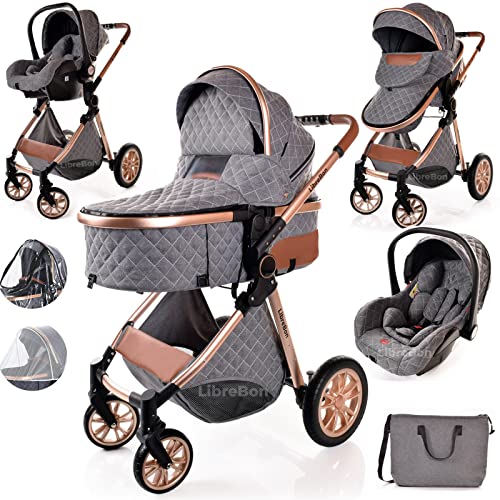Pram or Pushchair: A Comprehensive Guide for New Parents
Selecting the ideal mode of transport for children is among the first significant decisions brand-new parents deal with. With numerous choices on the market, the debate between prams and pushchairs can be overwelming. Push Chair For Sale will provide comprehensive insights into the distinctions between prams and pushchairs, their requirements, benefits and drawbacks, and what to consider before buying.
Comprehending Prams and Pushchairs
At its core, the choice between a pram and a pushchair depends on their design and intended use.
Meanings:
- Pram: A pram, short for "perambulator," is created primarily for newborns. It features a flat, carrycot-style seat that permits the baby to rest totally flat. Prams are frequently more luxurious and are planned for carrying infants who are not yet sitting up independently.
- Pushchair: A pushchair, likewise called a stroller, is designed for older babies and toddlers who can stay up. Pushchairs generally have an upright seat and might not recline completely flat, although numerous models now use adjustable reclining options for convenience.
Key Differences:
| Feature | Pram | Pushchair |
|---|---|---|
| Age of Use | Newborn to about 6 months | 6 months to 4 years or more |
| Seating Position | Flat, resting | Upright or somewhat reclined |
| Weight | Normally much heavier | Typically lighter |
| Portability | Less portable due to weight | More portable and easier to fold |
| Usage Case | Brief walks, leisurely strolls | Daily usage, errands, longer trips |
Benefits and Disadvantages
Pram
Benefits:
- Comfort for Newborns: Provides a flat surface favorable to a newborn's developmental requirements.
- Stylish Designs: Many prams featured classy styles, providing a touch of luxury.
- Storage Space: Sometimes consist of bigger storage choices listed below.
Disadvantages:
- Weight: Generally heavier and bulkier than pushchairs.
- Restricted Usage: Suitable just for newborns and babies who can not sit up.
Pushchair
Advantages:
- Versatility: Suitable for older babies and toddlers, often accommodating them for numerous years.
- Lightweight and Portable: Easier to fold and transport, making them ideal for hectic parents.
- Configurable Options: Many pushchairs have adjustable seats and attachments for automobile seats and carrycots.
Disadvantages:
- Comfort for Newborns: Not constantly appropriate for infants in the early months without a proper insert.
- Less Luxurious: Often viewed as less elegant compared to prams.
Making the Right Choice
When it concerns choosing in between a pram and pushchair, a number of factors need to be considered:
1. Lifestyle:
- If parents frequently make long trips or opt for strolls, a pram might be preferential.
- If they require to navigate through city streets or take public transportation, a lightweight pushchair might be more ideal.
2. Budget plan:
Pricing can vary commonly. Comprehending your financial limits will help concentrate on choices that meet both visual and practical criteria.
3. Versatility:
Some progressive solutions include travel systems that permit moms and dads to shift from a safety seat to a pushchair with the exact same base, using optimum flexibility.
4. Storage Space:
A pram may take up more room in a vehicle or in your home, while a pushchair's ability to fold down can be a significant advantage in tighter areas.
Frequently asked questions
Q1: Can I utilize a pushchair for newborns?
A1: Some pushchairs come with bassinet attachments or totally reclining seats, making them ideal for newborns. Nevertheless, it's necessary to check the specifications before use.
Q2: How do I choose the right design?
A2: Consider your way of life, spending plan, and the features you prioritize, such as weight, portability, and storage options.
Q3: Are prams and pushchairs safe for my baby?
A3: Yes, both prams and pushchairs are created with safety features. Look for models with a 5-point harness, durable brakes, and secure frames.
Q4: How long can I use a pram for?
A4: A pram is normally ideal until a baby can sit up unassisted, typically around 6 months.
Q5: What are travel systems?
A5: Travel systems are combinations of a safety seat and a pushchair that work in tandem, permitting easy transitions from vehicle to pushchair without requiring to get rid of the baby.
Picking between a pram and a pushchair eventually boils down to the requirements and way of life preferences of each household. Prams use comfort and design for babies, while pushchairs offer versatility and ease for older babies and toddlers. By carefully considering specific situations and requirements, moms and dads can make an informed choice that will guarantee safe and enjoyable getaways with their little ones.
In the end, whether one choose a stylish pram or a practical pushchair, the primary goal stays the same-- ensuring comfort and safety for the kid while helping with benefit for parents.

